Expedition 46 Preview
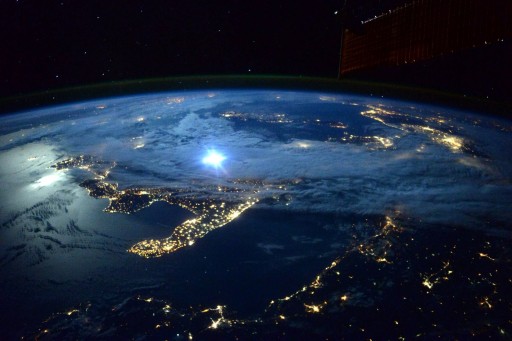
The 46th Expedition to the International Space Station is a four-month station increment highlighted by the conclusion of the first ever one-year mission to ISS. It is also dedicated to the continued utilization of ISS as an orbiting laboratory for over 200 ongoing studies across all fields of scientific research.
Expedition 46 is a relatively busy increment, with a packed science schedule in addition to a number of visiting vehicle departures and arrivals as well as spacewalks on the Russian and U.S. side of the orbiting complex. Expedition 46 will see the first upgraded Progress MS spacecraft arriving at the Space Station as well as the return to flight of the SpaceX Dragon after suffering an unfortunate launch failure in June 2015.
ISS Expedition 46 begins with the departure of Soyuz TMA-17M on December 11, 2015, bringing Oleg Kononenko, Kimiya Yui and Kjell Lindgren back to Earth after their six-month mission to the orbiting outpost. The Soyuz trio will make a rare evening landing on the steppe of Kazakhstan that was approved to forego a direct handover between ISS crews which would have required a relocation of the Soyuz craft before the new crew arrived.
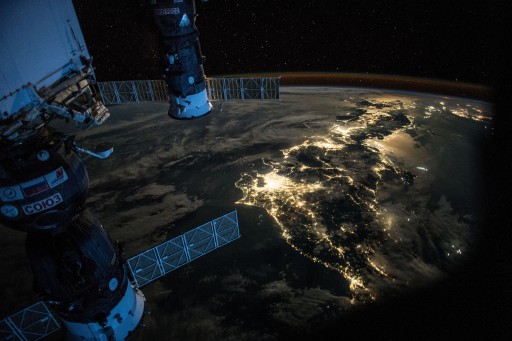
The three-crew operation phase in between Soyuz missions will be very short as the Expedition 46/47 crew is set to depart the Baikonur Cosmodrome atop a Soyuz FG rocket on December 15. The Soyuz TMA-19M spacecraft, carrying sixth-time space flier Yuri Malenchenko and Flight Engineers Time Peake and Tim Kopra, is set for a six-hour rendezvous with ISS to top up the crew at its regular complement of six as the new crew members join one-year crew members Scott Kelly and Mikhail Kornienko and Flight Engineer Sergei Volkov.
Outlined for Expedition 46 is a busy schedule – picking up immediately after the crew’s arrival with a Progress rotation as the M-28M spacecraft makes room for the first Progress MS spacecraft, the latest evolutionary stage of the Russian resupply craft. On both sides of ISS, crew members will therefore be busy with cargo operations since the Cygnus OA-4 resupply vehicle arrived at the U.S. Segment just before ISS transitioned to Expedition 46.
Early in 2016, the next resupply craft will embark on a journey to ISS as the SpaceX Dragon returns to flight. If launching in January, Dragon will arrive while Cygnus is still attached to ISS which would mark the first time two Commercial Cargo Vehicles are berthed to ISS. In the first two months of 2016, the crew will be busy with two spacewalks, one on the U.S. side and one on the Russian segment before Expedition 46 winds down. Soyuz TMA-18M will return to Earth on March 2, 2016 to put an end to a 340-day mission for Scott Kelly and Mikhail Kornienko who will return to Earth with Sergei Volkov.
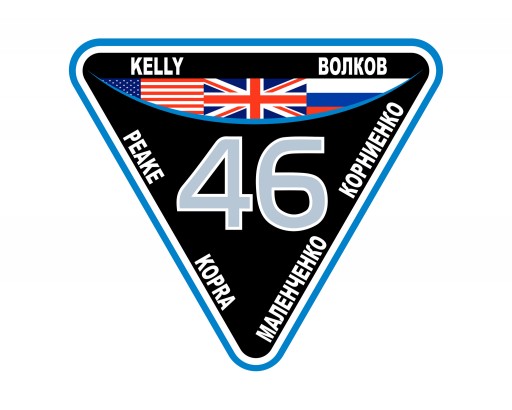
The one-year mission is the first of its kind conducted on ISS to deliver data that was previously unavailable. Gaining data on degradation occurring beyond the standard half-year mission will deliver extremely valuable insights needed in the development of countermeasures for future space missions that will last one year and beyond.
Throughout Expedition 46, the majority of the crew’s time will be dedicated to science operations, supporting over 200 studies ongoing aboard the orbiting laboratory. Science supported by the Space Station spans across all branches from Earth and Space Science over physical science, technology demonstrations, biology, biotechnology, chemistry and human research to educational activities and student-run experiments.
One particular area of interest is human research, taking advantage of the environment aboard ISS to study changes undergone by the human body down to a cellular and biochemical level when being exposed to the space environment for an extended period of time to identify the underlying mechanisms of phenomena such as bone and muscle loss as well as immune system changes, changes to the fluid distribution within the human body and a series of other phenomena.
One major item is the collection of information needed for the development of countermeasures that will be used to limit the negative effects such as degradation of bone and muscle mass seen today so that humans can stay in space for long missions of up to several years.
To complete these studies, the crew of ISS will serve as test subjects themselves – performing regular sampling activities, tests of their cognitive abilities and a range of other tests, also looking at psychological aspects.
Expedition 46 Crew
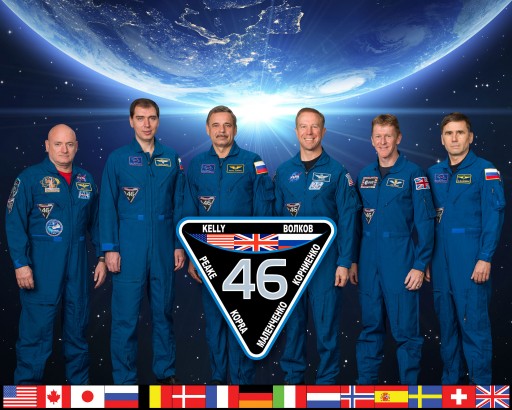
International Space Station Expedition 46 is highlighted by a very experienced crew of one rookie and five space veterans with several years of cumulative spaceflight experience with at least one prior long-duration mission to the orbiting laboratory.
Remaining in command for Expedition 46 is Scott Kelly, one of the two one-year crew members who will spend the second half of his tenure as ISS Commander. Kelly is a former Captain in the U.S. Navy and also has an engineering background in aviation systems. As part of his career in the military, Kelly worked as a test pilot and logged over 8,000 flying hours. After his selection by NASA, Kelly served as a Pilot on Space Shuttle Discovery on mission STS-103 to the Hubble Space Telescope in 1999. His second flight was as a commander aboard Shuttle Endeavour for mission STS-118 that delivered the S5 truss to ISS. Launching on Soyuz, Kelly made his first long-duration mission to ISS as part of Expedition 25/26 in 2010/11. Overall, he logged 180 days in space as part of his three missions.
The other one-year crew member, Mikhail Kornienko has made one prior mission to ISS as part of Expedition 23/24, logging 176 days in space. He comes from an engineering background working on rocket engines, also specializing in EVA equipment and launch operations. He was selected as a Cosmonaut in 1998 but had to wait nearly 12 years to finally fly into space. During his mission to ISS, Kornienko performed one spacewalk of six hours and 42 minutes.
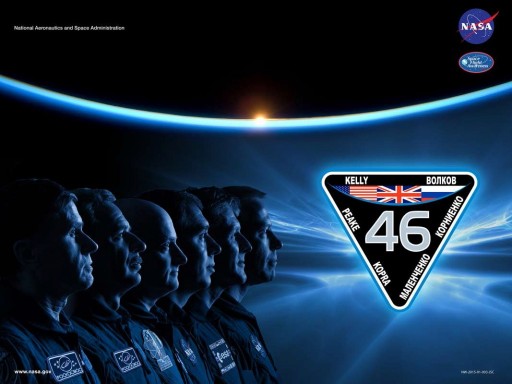
Sergei Volkov is the first Cosmonaut in second generation, son to Aleksandr Volkov who flew to space three times in the 1980s and 90s. Volkov comes from a military background, serving as a fighter pilot, but his military career was rather short given his early selection as Cosmonaut in 1997. He made his first flight in 2008 commanding the Soyuz TMA-12 spacecraft and serving as Commander of ISS Expedition 17, becoming the youngest person to command the Space Station. He was one of the first crew members trained on the new Soyuz TMA-M spacecraft and commanded the TMA-02M spacecraft for a half-year stay on ISS as part of Expedition 28/29. In total, Volkov logged 365 days spent in space and performed three spacewalks for a total of 18.5 hours.
Yuri Malenchenko already ranks in the Top 10 of Cosmonauts with the most time spent in space, having made five prior long-duration missions in an accomplished career. Selected as a Cosmonaut in 1987, Malenchenko flew for the first time in 1994 to the Mir Space Station for a half-year mission. Transitioning to the ISS program, he was part of Space Shuttle Mission STS-106 that prepared ISS for permanent inhabitation. He conducted four Expedition missions to the Space Station for Expedition 7, 16 and 32/33, also amassing 30 hours of spacewalking time. Overall, Malenchenko logged 641 days in space and will reach 814 days at the end of his flight, placing him second in the all-time list after record-holder Gennady Padalka.
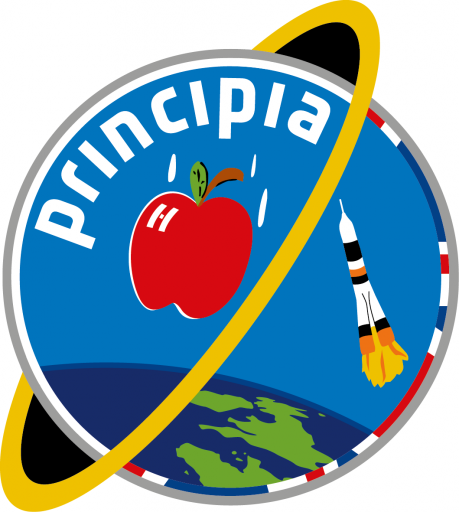
Tim Kopra comes from a military background, having served as a test and helicopter pilot instructor before he started working in the technical branch of NASA. He was selected as an Astronaut in 2000 and began training for a mission to ISS on the Space Shuttle. Kopra launched aboard Endeavour in 2009 and worked aboard ISS for nearly two months as part of Expedition 20, returning to Earth on Space Shuttle Discovery after a mission of 58 days. He was selected for Space Shuttle mission STS-133, but sustained an injury in a biking accident just weeks before launch.
Tim Peake is a European Space Agency Astronaut of British nationality. He had a military education and became a helicopter pilot and pilot instructor in the British military and as a test pilot in private industry. Over the course of his career, he logged 3,000 hours flying over 30 different types of aircraft. Peake was selected as an Astronaut in 2009 as part of six selected candidates and his flight assignment for Expedition 46/47 was announced in May 2013. Customary for ESA missions, Peake’s flight has its own designation – Principia.
Spending the Holidays aboard ISS
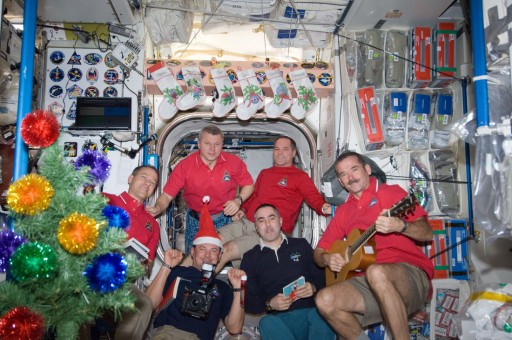
The International Space Station Expedition 46 Crew will be spending the Christmas and New Year’s holidays aboard the Station, orbiting Earth more than 15 times a day while their friends and families are enjoying the holidays on the ground.
The crew members will have have off-duty time over the holidays, so they can get together inside the Service Module to celebrate, high above the world. The space station has its very own Christmas tree and crews are known to get together inside the Zvezda module to celebrate.
Operations will be relatively quiet during the holidays with essential science and maintenance operations being supported by the six crew members that will be able to relax ahead of starting the new year that will be filled with a variety of operations aboard the orbiting outpost.
Visiting Vehicles
International Space Station Expedition 46 will be relatively busy in terms of cargo operations ongoing aboard the orbiting outpost. A number of visiting vehicle activities are planned over the course of the four-month Station increment.
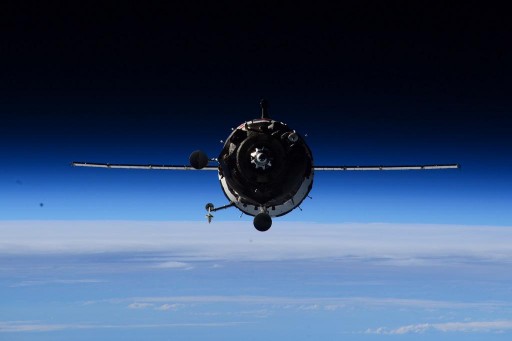
The formal start of Expedition 46 is marked by the departure of the Soyuz TMA-17M spacecraft on December 11, 2015 after a docked mission of four and a half months. Returning to Earth in a rare evening landing of the Soyuz will be veteran Soyuz commander Oleg Kononenko and his Flight Engineers Kimiya Yui and Kjell Lindgren who will be making their first return to Earth. The night landing of the Soyuz was approved to avoid a relocation of the Soyuz that would have been necessary for it to land in daylight because Soyuz TMA-19M could only reach ISS in the first half of December and a daylight landing would only be possible in the second half. Therefore, a decision was made to accept the operational difficulties of a nighttime landing and forego the direct crew handover.
The first visiting vehicle operation of Increment 46 will be the arrival of the Soyuz TMA-19M spacecraft to bring three crew members to ISS after the complex is staffed by the three resident crew members for just a few days in a short gap between Soyuz departures and arrivals.
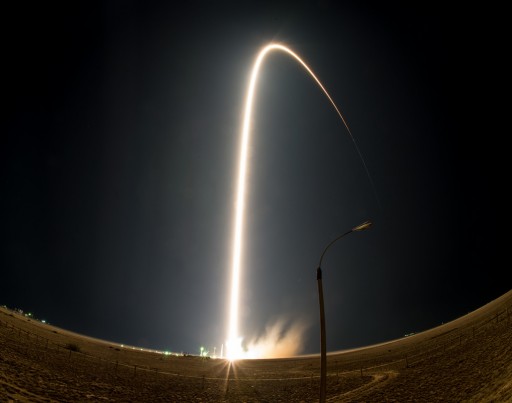
Set for liftoff on December 15, six-time space flier Yuri Malenchenko and Flight Engineers Tim Kopra and Tim Peake will climb into their Soyuz spacecraft sitting atop a fully fueled Soyuz FG rocket set to complete a nine-minute ascent into orbit to pave the way for a fast-track six-hour rendezvous with ISS.
This flight profile calls for four major rendezvous burns that have to be performed over the first two orbits so that Soyuz can initiate its Automated Rendezvous Sequence during the third orbit to make its docking on Orbit #4. Using its KURS Rendezvous System, the Soyuz will conduct a fully automated docking to the Rassvet Module to restore the Station’s crew to six.
The joint Expedition 46 crew will not get much of a break because planned for December 19 is the departure of the Progress M-28M spacecraft, undocking from the the Pirs docking compartment to make room for the next Progress cargo spacecraft. Progress MS is set for liftoff atop a Soyuz 2-1A rocket on December 21, marking the first launch of the improved Progress MS spacecraft and the first Progress flight atop Soyuz 2-1A since the failed Progress M-27M mission in April 2015.
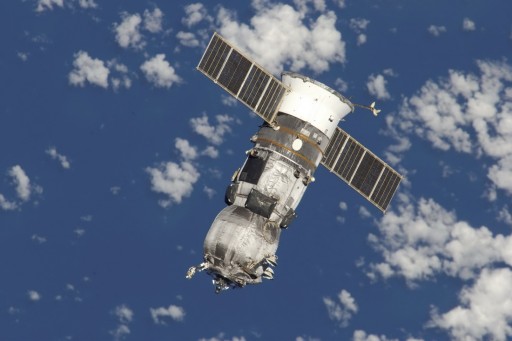
Progress MS is the latest evolution of the Progress cargo spacecraft. The overall design of the Progress spacecraft dates back to the 1970s and is based on the crewed Soyuz spacecraft. Progress made its first mission in 1978 to deliver supplies to the Russian Salyut 6 space station. Over the years, the design of the Progress spacecraft underwent a number of modifications and improvements. A number of spacecraft generations have flown to date, each featuring incremental upgrades to advance the design of the Progress as newer technologies became available while still retaining the overall design philosophy that has proven extremely robust and reliable with only a handful of Progress spacecraft failures.
In keeping an overall commonality between the crewed Soyuz spacecraft and the uncrewed Progress cargo craft, the Russian space program has the unique capability of introducing new systems on the Progress spacecraft first, going through extensive evaluation on the uncrewed craft before being implemented on the Soyuz.
The same is true with the Progress M-M to MS upgrade since Soyuz will soon (March 2016) make its transition from the TMA-M to the MS version.
Major changes introduced by the MS upgrade of Progress include the replacement of the Ukrainian-built Kvant-V radio communications system with a Unified Command Telemetry System, ending Russia’s reliance on the Ukraine for the production of antennas, feeders and communication electronics. Furthermore, the new telemetry and command system of Progress MS is capable of using the Luch Geostationary Communications Satellites to relay telemetry to the ground and receive relayed commands during the portion of its orbit not in range of Russian ground stations.
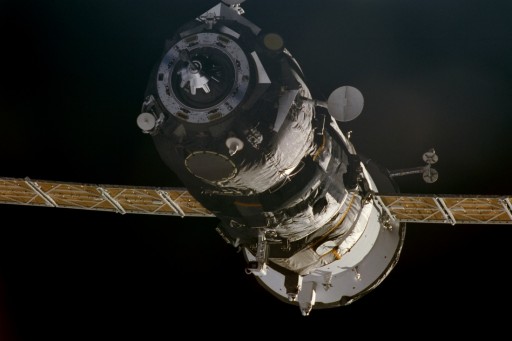
Another communications upgrade of the MS series is the implementation of a Proximity Communications Link established with the Space Station during rendezvous to enable relative navigation as an additional source of navigation data. Progress MS is outfitted with GPS and Glonass receivers for accurate time determination, state vector calculation and orbit determination – allowing a more accurate targeting of burns, even by the spacecraft itself, no longer relying on radar tracking that is only possible during ground station passes.
The improvements made to the flight control system, onboard software and communications systems will also permit the switch from analog to digital video transmission for improved video quality during proximity operations. The KURS Navigation System makes a significant improvement in the newest generation of Russian Progress and Soyuz spacecraft, stepping away from the KURS-A system and implementing a new digital KURS-NA system.
The KURS System of the Progress and Soyuz Spacecraft is a radio-based system that allows the vehicles to perform a fully automated Rendezvous, Final Approach and Docking Sequence. KURS uses signals sent from the target vehicle that can be received by several antennas on the chaser vehicle to determine its line-of-sight and pitch angles for the far-rendezvous beginning at 200 Kilometers and pitch, heading and line of sight angles as well as range and range rate during the close rendezvous.
The KURS-NA eliminates any Ukrainian-built components from the system and provides an overall weight reduction while increasing the capabilities of the system. KURS-NA needs fewer antennas and will deliver more accurate measurements to bring Progress and Soyuz craft to a fully automated docking with the Space Station.
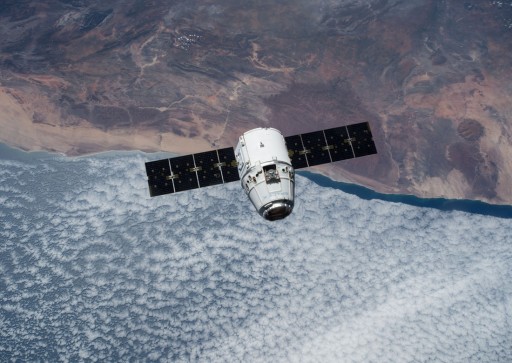
Heading up to ISS somewhere between mid January and mid February will be the Dragon SpX-8 mission, marking the return to flight of the SpaceX Dragon spacecraft after suffering a launch failure in June 2015 due to a structural failure in the Helium pressurization system on the second stage of the Falcon 9 rocket.
For the first time rising atop the upgraded Full Thrust version of Falcon 9, Dragon will blast off from Space Launch Complex 40 at Cape Canaveral Air Force Station. Dragon will enjoy a ten-minute ascent, being released into a Low Earth Orbit from where it can begin its link-up with the Space Station through a series of orbit-raising maneuvers. The flight will include an attempt to return the first stage booster of the Falcon 9 rocket to Cape Canaveral for a landing on a concrete pad close to the launch site.
Arriving in orbit, Dragon will breathe fire, priming its propulsion system, unfolding its solar arrays and opening the GNC Bay door ahead of the first in a set of orbit adjustments that will take Dragon into a higher orbit, approaching the Space Station from below and behind. Dragon will make a methodical rendezvous including several hold points as it climbs up to ISS from a point straight below the orbiting complex. Once arriving at the Capture Point, the ISS crew controls the Station’s Robotic Arm, Canadarm2, to capture the vehicle and berth it to the Harmony Node of the Space Station.
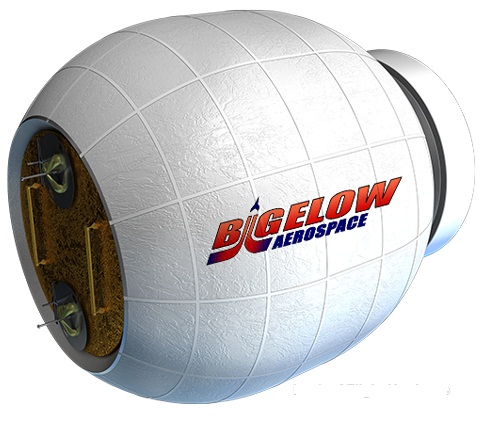
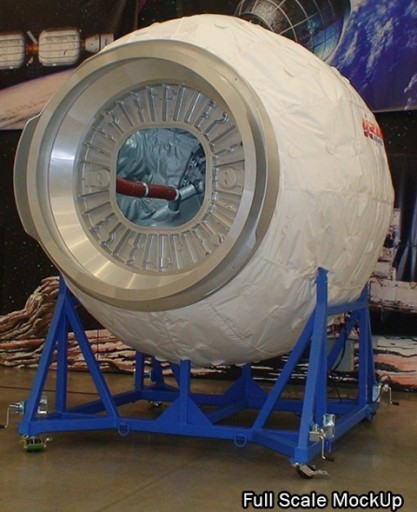
When hatches to the Dragon are open, the crew can begin to unload the spacecraft that will be delivering a variety of equipment to ISS including science experiment hardware, crew supplies and maintenance equipment. Making its way to ISS in Dragon’s Trunk Section will be the Bigelow Expandable Activity Module, BEAM.
NASA started assessing the possibility of flying an expandable module to ISS in 2010 and conducted a number of meetings with Bigelow culminating in a two-day concept review in early 2011. Eventually, in December 2012, NASA signed a $17.8 million contract with Bigelow to develop the Bigelow Expandable Activity Module, BEAM with a launch date in 2015.
BEAM is similar, but not identical, in size and construction to the Genesis modules, however, it does not use solar panels and its expandable hull might consist of a different number of layers. One of the most significant changes to the module is the addition of a Common Berthing Mechanism that was manufactured by Sierra Nevada under a $2 million contract. The CBM is required to allow BEAM to be berthed to the International Space Station. Another feature is a rigid forward bulkhead that provides the mounting structure for two grapple fixtures for the Station’s robotic arm to allow the module to be handled in space.
Internal sensors include temperature and pressure sensors that are powered by batteries and require crew members to access the module to retrieve the data. Whether BEAM will actually be used for storage over the course of its two-year mission duration at ISS will likely be determined based on vehicle performance.
The deployed BEAM spacecraft has a mass of around 1,360 Kilograms and in its deployed configuration measures 4 meters in length and 3.2 meters in diameter with a living volume of 16 cubic meters.
BEAM is significantly smaller than the operational modules that are being developed by Bigelow for a number of commercial applications. BA330 is a full-scale habitation module using expandable technologies. Large enough to facilitate a crew of six, the module could build the basis of a modular Space Station consisting of several modules for use by commercial or private customers for either crewed or uncrewed missions with crewed flights requiring the procurement of a launch/landing spacecraft. The module will have a pressurized volume of 330 cubic meters, hence its numeric designation, measuring 6.7 meters in diameter and 13.7 meters in length with a launch mass of 20 metric tons. Bigelow hopes to have two BA330 modules ready for launch in 2018, being manufactured at a production facility opened in 2011. An even larger module, BA2100, envisioned for use as an interplanetary transport spacecraft has been proposed by Bigelow.
The Cygnus OA-4 spacecraft will depart the Space Station in February 2016 after a stay of around two months, facilitating the transfer of 3,500 Kilograms of cargo to ISS and 1,500kg of no-longer-needed items to Cygnus for a fiery disposal via destructive re-entry.
ISS Expedition 46 comes to an end on March 1, 2016 when Sergei Volkov, Mikhail Kornienko and Scott Kelly depart the Station aboard their Soyuz TMA-18M spacecraft for their return to Earth to put an end to the first yearlong mission to the International Space Station.
Spacewalks
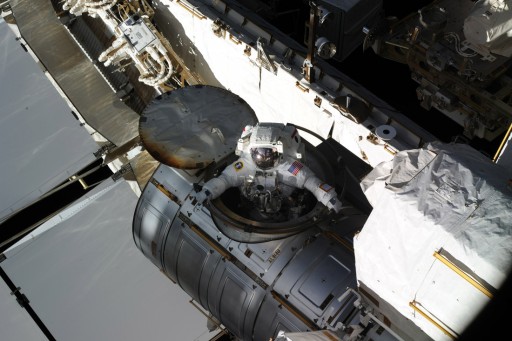
A pair of Spacewalks is planned for ISS Expedition 46, one on the U.S. side of ISS and one performed from the Russian airlock.
Further USOS EVAs are also on the horizon as part of the preparation of the U.S. Segment of ISS for the start of Commercial Crew Missions, however, the timing of these EVAs depends on the arrival of the first International Docking Adapter and the relocation of Pressurized Mating Adapter 3. Therefore, these EVAs will likely take place after the end of Expedition 46.
The USOS Spacewalk is expected to occur in the first weeks of 2016 some time after the high Beta Angle period ends in early January. The EVA will be dedicated to the replacement of a failed Sequential Shunt Unit on the S6 Truss Segment that suffered an overcurrent condition on November 13, 2015. Diagnosing the issue showed that a transient overcurrent event reached 200Amps before the downstream Direct Current Switching Unit reacted as designed and shunted all power coming from the 1B Solar Array Wing and the associated Sequential Shunt Unit. With the arrays shunted, power was no longer flowing into a shorted system and Mission Controllers were able to tie the 1B power channel to the 1A channel within the Main Bus Switching Unit and re-power all systems aboard ISS.
Analysis of data showed that Sequential Shunt Unit (SSU) 1B may not be able to regulate voltage. Without being able to provide a stable voltage to downstream systems, the SSU will not be reconnected to the power bus.
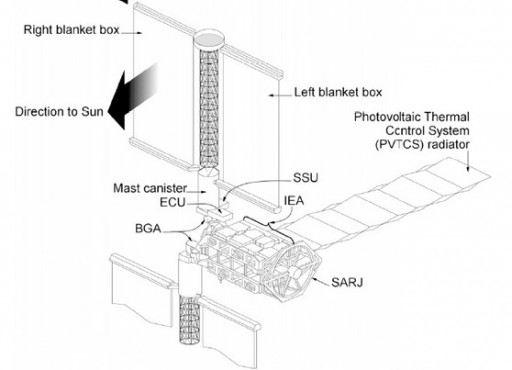
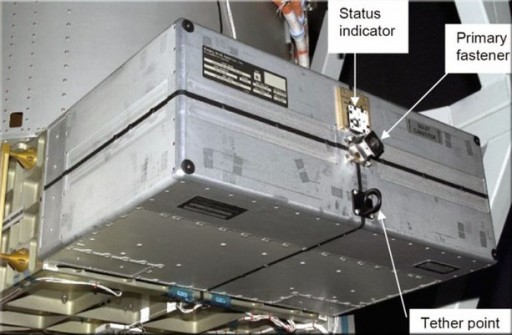
The Sequential Shunt Units are responsible of receiving power from the solar arrays and regulating power coming from the arrays at an established setpoint of 160 volts. This is accomplished by shunting and un-shunting strings on the array as the output power of the SSU is the sum of all connected strings. When the SSU output power exceeds the current power demand of ISS systems and batteries, the bus voltage begins rising which triggers the SSU to begin shunting strings to reduce power output. A dropping bus voltage triggers the SSU to un-shunt strings.
This regulatory capability of the Sequential Shunt Unit will not be recovered and a replacement of the unit will be necessary as part of a spacewalk. A similar SSU replacement was performed in October 2014 when the 3A SSU was removed and replaced by spacewalkers Reid Wiseman and Barry Wilmore.
The spare Sequential Shunt Unit was retrieved from the Pressurized Mating Adapter 3 module in December and diagnostic equipment and cables fly to ISS on the Soyuz TMA-19M mission so that the spare unit can be checked inside ISS before being taken outside for the replacement.
For the replacement, an EVA crew of two will head outside via the Quest Airlock, taking the spare SSU outside with them. The crew will then start translating outboard on Face 1 of the Starboard Truss Segment. Along the way, they will pick up an Articulating Portable Foot Restraint and, in the S1/S3 interface, both crew members will anchor their Green Hooks, giving them an additional length of tether for the translation all the way out to S6, past the Solar Alpha Rotary Joint to the 1B Solar Array Wing. Arriving at the worksite, EV1 will install the foot restraint in the appropriate Worksite Interface and EV2 will secure the ORU bag containing the SSU on hand rails.
The setup of the EVA follows the constraint that the SSU replacement can only take place during orbital night when the arrays are not generating power as a matter of crew and equipment safety. Therefore, the entire EVA is planned around one specific 35-minute eclipse during which the R&R will take place. Subsequent night passes are also available should any problems arise that prevent the crew from finishing the task during the first eclipse.
Prior to the eclipse, the crew will double check that they are at the correct SSU and one of the spacewalkers will ingress the foot restraint and use a Ratchet Wrench to break torque on the single Acme Bolt that is holding the SSU in place – he will drive the bolt less than one turn to prevent electrical arcing in the back of the SSU. Afterwards, the crew members will verify they are in a good position for the handoff of the SSU. They will configure the Pistol Grip Tool for the release of the bolt and the crew will begin waiting for the eclipse.
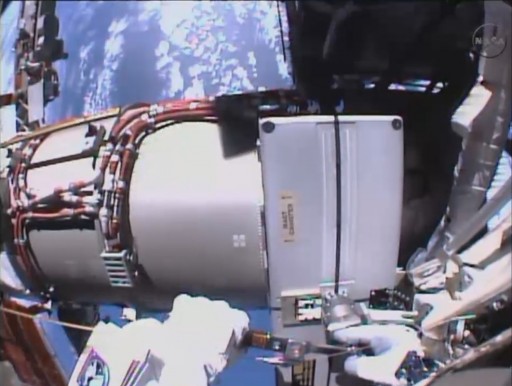
Two minutes into the night pass, Mission Control will verify that all inhibits are in place and the array is not generating power, giving the crew a GO for the removal of the SSU. Should the crew be behind the timeline, they need at least 15 minutes of eclipse time remaining to begin the task, otherwise they would have to wait to the next night pass. At least ten minutes in darkness must remain after the SSU removal to allow the crew to begin the installation of the spare.
They will use the PGT to release the SSU bolt until the Status Indicator shows UNLOCK. Afterwards, they will quickly stow the PGT, remove the SSU and stow the SSU on a Body Restraint Tether using a scoop. A quick inspection of the SSU platform will be performed to check for charring or debris.
EV2 will retrieve the spare SSU from its bag and hand it off to EV1 who will assume control of the unit and show it to EV2 for an inspection of the blind-mate connectors of the back of the SSU.
Next, EV1 rotates the SSU to the correct orientation for installation relative to the mast, as indicated by arrows on the SSU before using alignment marks to position the SSU on its base plate that includes two receptacles for two guide pins, electrical connectors and the structural interface for the bolt. Alignment guides will show whether the SSU is positioned properly and EV2 will be able to look from the side, making sure the SSU is in a good position before EV1 engages the bolt. The team will confirm that the SSU load pads are in contact with the Mast Canister Platform which will mark the conclusion of the SSU installation.
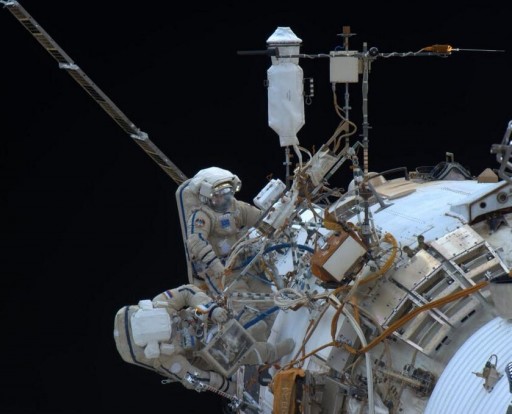
Mission Control will then conduct a functional check of the installed SSU while the crew members clean up the work site by stowing the old SSU in the ORU bag, removing the scoop from the installed unit and retrieving the foot restraint.
Russian EVA-42 is on the schedule for February 2016, to be conducted by veteran spacewalkers Yuri Malenchenko and Sergei Volkov. For Malenchenko, making his 6th flight into space, it will be the sixth EVA with a previous record of 30 hours and 7 minutes of spacewalking time. For Sergei Volkov who has two prior missions to ISS, it will be the fourth EVA, having spent 18 hours and 35 minutes in the vacuum of space.
No outline of the Russian spacewalk has been published at the writing of this overview, but the EVA is likely to consist of maintenance tasks on the exterior of the Russian module, the cleaning of Service Module windows, and the installation or retrieval of external experiments.
One-Year Expedition
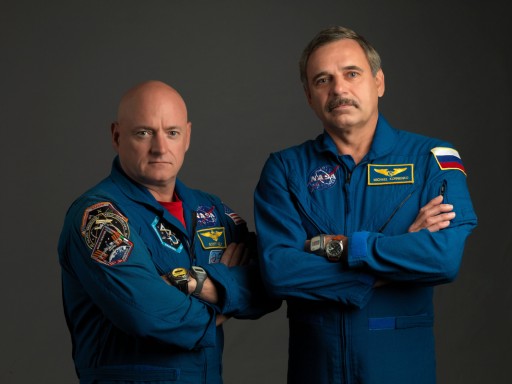
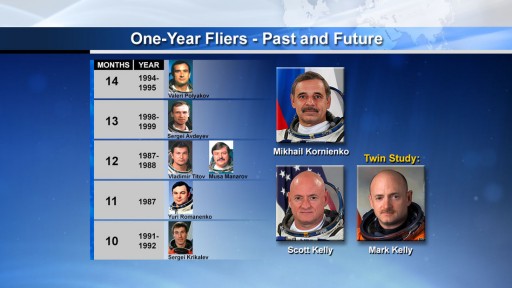
The idea of extending the duration of flights to the International Space Station to one year had been floating around for a while before NASA and Roscosmos agreed to conduct one such mission as a test, with each agency selecting one crew member to remain aboard ISS for one year. NASA had to choose from a number of applicants who were willing to commit to spending one year in space, selecting Scott Kelly for the mission who brings with him his twin brother Mark to participate as a ground control subject before, during and after the mission. Roscosmos selected veteran ISS crew member Mikhail Kornienko who already had a prior training experience with Scott Kelly as part of Kelly’s previous backup duty on Soyuz TMA-18. The official announcement of the one-year ISS mission was made in November 2012.
The one-year mission to ISS will not be the longest single spaceflight to be performed – four Cosmonauts have performed missions of one year and beyond, all to the Mir space station. At the top stands Valeri Polyakov with a mission of 438 days performed in 1994/95 followed by Sergei Avdeyev who spent 380 days in space in the closing years of Mir, from August 1998 to August 1999. Vladimir Titov and Musa Manarov performed a mission of exactly 365 days in 1987/88 aboard Mir. The longest mission to ISS was performed by the crew of Soyuz TMA-9, Mikhail Tyurin & Michael Lopez-Alegria in 2006/07 with a total duration of 215 days.
The space environment, characterized by microgravity and increased radiation exposure, has an effect on almost all bodily systems including physiological and psychological aspects. Typically, the physiological impacts of prolonged exposure to the space environment can be compared with an accelerated aging process – typical symptoms are a loss of muscle and bone mass, degradation of the cardiovascular and neurovestibular systems, and a significant degradation of the immune system. Balance disorders and behavioral changes are also observed in humans undergoing long-duration space missions.
For a six-month exposure to the space environment, abundant data is available through the previous Expeditions to ISS, Mir and the Salyut space stations, but crossing that threshold, only a handful of humans have ever undergone data gathering during a one-year flight. It is of great interest to see what happens between six and twelve months to extrapolate potential effects that even longer missions would have.
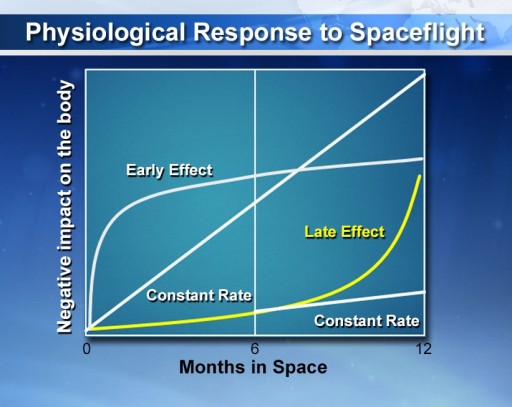
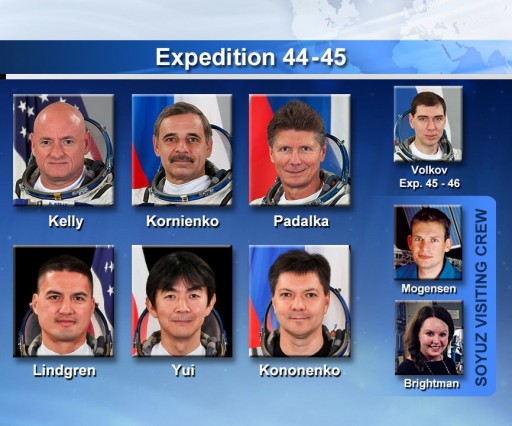
In the space environment, physiological degradation can occur on three different time scales – a constant rate that begins with the start of the mission and worsens over time at a constant speed, an early effect that manifests itself within the first weeks and months in space and then slows down in progression, and a late effect that is almost non-discernible during the first months in space before showing a rapid increase.
These late-effect physiological responses between the six-to-twelve month mission duration are the entire goal of the one-year mission to ISS. Even with just two crew members, the mission will identify risks associated with such effects that would need addressing for future missions to Mars and beyond.
The data delivered by Mir represents only five data points that are very basic, e.g. looking at a crew member’s ability to exercise over the course of the flight and post-flight health assessments, but lacking the in-depth look at the precise changes in different body systems or a study of potential mechanisms. With today’s technology, this first one-year mission will deliver a data set far surpassing those earlier missions.
The one-year ISS mission is facilitated by inserting a direct handover at the six-month mark in the mission to keep up with the 200-day orbital certification duration of the Soyuz spacecraft which requires the two crew members to launch and land on different spacecraft.
In September, Kelly and Kornienko transitioned from the crew of Soyuz TMA-16M to the crew of TMA-18M in a direct handover with short-duration crew members Andreas Mogensen and Aidyn Aimbetov launching on the TMA-16M spacecraft and returning after a ten-day mission together with Gennady Padalka on the TMA-16M spacecraft.
Sergei Volkov, Kornienko and Kelly are expected to stay aboard ISS until March 1, 2016 for a flight duration of 182 days for Volkov and 340 days for Kornienko and Kelly.
Kelly Twins Study
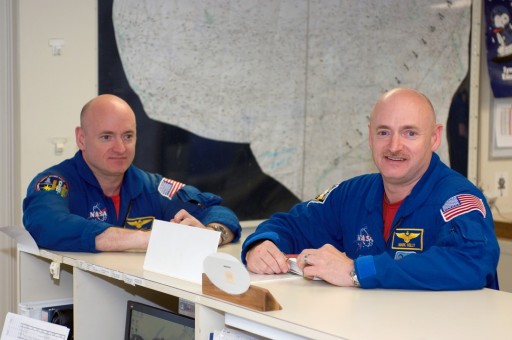
One of the unique aspects of Scott Kelly’s mission is the concurrent study of his twin brother Mark who will remain on the ground. Although Mark has retired from the Astronaut Office, he agreed to participate in this unique, once-in-a-space-program study.
Because Mark will be able to go about his normal business on Earth and not experience the same environment Scott will be experiencing, the twin study is considered observational in nature without any defined outcomes and objectives – it is considered a welcome opportunity to compare data collected from genetically similar astronauts to observe the human effects of spaceflight.
Data acquisition from the twins will include regular sampling activities of blood, saliva, swabs and stool as well as physical and psychological tests. A total of ten different studies were chosen for the twins:
Metabolomic and Genomic Markers of Atherosclerosis as Related to Oxidative Stress, Inflammation, and Vascular Function in Twin Astronauts [This study looks at the effects of long-duration space flight on the cardiovascular system, investigating the relationship between gene expression, metabolomic profiles, biomarkers in blood and urine, and arterial structure and function. The experiment includes concurrent sample acquisition and exams from both twins – vascular function exam (ultrasounds of blood vessel function), blood & urine sampling at Launch minus 180 and 45 days, during the flight at +15, +60, +180, +240. +300 and Return-15 days, and three days after the return.]
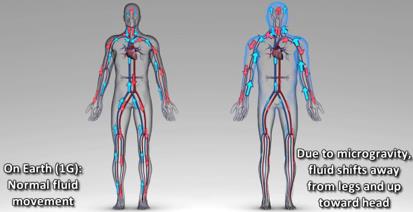
Proteomic Assessment of Fluid Shifts and Association with Visual Impairment and Intracranial Pressure in Twin Astronauts [Looking at fluid shifts is an important item in the current studies of spaceflight-induced changes in the human body since the fluid distribution on the ground is driven by gravity causing astronauts to exhibit ‘puffy heads’ and ‘chicken legs’ once gravity is no longer present. This particular study looks at the proteomic and genomic biomarkers underlying fluid shifts in the space environment as well as associated visual impairment and intracranial pressure symptoms. Since the study looks at the proteins present in the blood plasma, these sampling operations will be required from both twins. Additional measurements include ultrasound measurements of fluid shifts, intracranial & intraocular pressure, ocular structure, blood pressure, heart rate and vascular resistance. MRI and tissue hydration testing is performed pre & post-flight.]
Cognition on Monozygotic Twin on Earth [This study focuses on behavioral health to characterize the effects a prolonged exposure to the space environment, the confined quarters of ISS and other environmental properties have on the perception and reasoning, decision making and alertness. The study includes questionnaires and behavioral tests performed before, during & after the flight.]
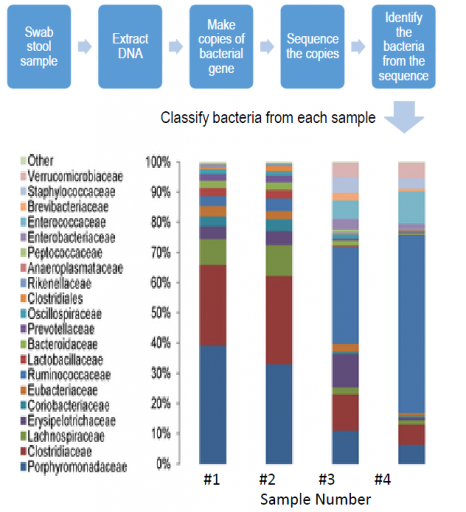
Metagenomic Sequencing of the Microbiome in GI Tract of Twin Astronauts [The population of the human gastrointestinal tract has an important effect on the overall health. The bacteriome can help in digestion and immune system function, but it can also have negative effects such as an overgrowth in bacteria that accompanies illness or stress. This study will look at the changes to the bacterial population of the GI tract over the course of a year and determine in what way they are different from changes observed on Earth. The investigation will look at particular types of bacteria susceptible to the space environment and also identify possible causes and consequences. The study will use stool swab samples to extract the DNA of bacteria that are then sequenced and identified followed by a classification from each sample taken at different times during the mission.]
Differential Effects on Telomeres and Telomerase in Twin Astronauts Associated With Spaceflight [Telomeres are repetitive nucleotide sequences at each end of a chromatid serving the function of protection of the chromosome from deterioration and preserving the information-carrying sequences of the DNA. Aging on Earth is associated with the shortening of these repetitive sequences and can therefore be used as a biomarker of aging and age-related pathologies such as cancer and cardiovascular deterioration. This biomarker is able to capture the interplay between genetics and lifestyle factors – with two subjects with similar genetics (twins), the lifestyle factors (one in space, one on Earth) increase in their importance in the effect on the telomeres. The unique aspect of this study is that it reflects the combination of exposures such as radiation, and experiences – nutritional, psychological, physical and otherwise. The study will utilize blood sampling pre-flight as reference, during flight to asses short-term changes and for a lengthy post-flight period to look at long-term effects.]
Comprehensive Whole Genome Analysis of Differential Epigenetic Effects of Space Travel on Monozygotic Twins [First, this study aims to compare the extent of DNA methylation between the two twins. Methylation, the addition of a methyl group to cystine or adenine DNA nucleotides, is one of the significant drivers in gene mutation and can be caused by external factors. This study tries to acquire samples at pre-determined intervals and based on unexpected exposures such as radiation events, or spacecraft contamination to link methylation to these spaceflight-related factors. Secondly, the study aims to assess whether effects seen in the space-flown twin are transient or long-lived. It will also be assessed whether mutations arise secondarily to epigenetic changes. Blood collection will take place at L-90, L-75, L+1, L+45, L+190, L+223, L+350 and R+90.]
Biochemical Profile: Homozygous Twin control for a 12 month Space Flight Exposure [This study includes monitoring a range of biochemical parameters through blood and urine samples obtained from both twins. These parameters will reflect nutritional and physiological variables that may be altered as a result of the spaceflight experience and related nutritional changes, stress, microgravity and radiation. Data from this study will be able to improve the understanding of the role of the diet in the different biological systems. Blood and urine collection is performed at L-180, L-45, L-10, L+15, L+30, L+60, L+120, L+150, L+180, L+240, L+300, L+360, R+0 and R+30 days.]
The Landscape of DNA and RNA Methylation Before, During, and After Human Space Travel [This study aims to uncover the genetic networks and expression patterns activated in the space environment, trace clonality of epigenetic changes and examine the extent of methylation of RNA. DNA methylation changes will be observed across the genome and a catalog of coding and noncoding RNAs will be observed to generate a transcriptome-wide map of RNA methylation sites. This will provide insight into potential mutation sites and associated consequences for long-duration space travelers.]
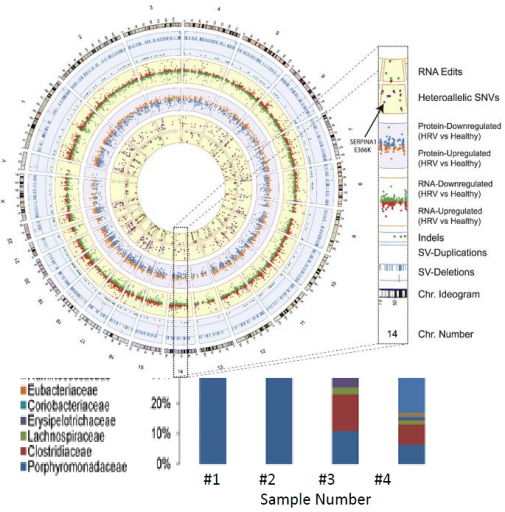
Longitudinal Integrated Multi-Omics Analysis of the Biomolecular Effects of Space Travel [This study will collect all forms of data obtained as part of the various twin studies to create the most comprehensive portrait of the biophysical response to extended exposure to the space environment. Using the whole data set will allow scientists to detect and analyze even the most subtle changes in the twins’ physiology over time. This is done by following alterations to cellular systems that will help provide understanding of the effects of space travel on human health and how an astronaut’s genetic disposition may contribute to their unique physiologic response.]
Characterizing Personalized Changes in Baseline Immune Abnormalities and Stimulated Immune Response in the Presence of a Benign Trivalent, Inactivated, Flu Vaccination [The space environment is known to have an effect on a person’s immune system. Taking two genetic similar subjects, one in space and one on Earth, will allow for a detailed study of spaceflight-induced degradation of the immune system over an extended period of time. The study will also characterize how long-term space effects change at baseline and after the seasonal flu vaccination. Baseline and post-vaccination are studied before, during and after the flight.]
Expedition 46 – Science Overview
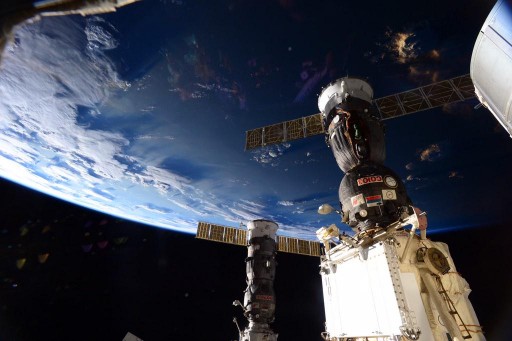
Continuing in its full utilization phase, ISS will feature a packed science schedule for the Expedition 46 crew who will be spending over 40 hours per week with the ongoing scientific research aboard the orbiting laboratory. Overall, ISS Expedition 46/47 will see more than 250 studies performed aboard the Space Station including around 50 Russian experiments.
A number of new experiments will be inaugurated as part of Expedition 46/47.
The Packed Bed Reactor Experiment (PBRE) studies the behavior of gaseous and liquid media when flowing simultaneously through a column filled with a porous substance. This porous media, the packing of the column, can be of different shapes and materials depending on its purpose which generally is to enhance the contact between the two immiscible fluid phases that are flowing through the column. On Earth packed columns are used in a wide variety of applications such as reactors, scrubbers, strippers and many more.
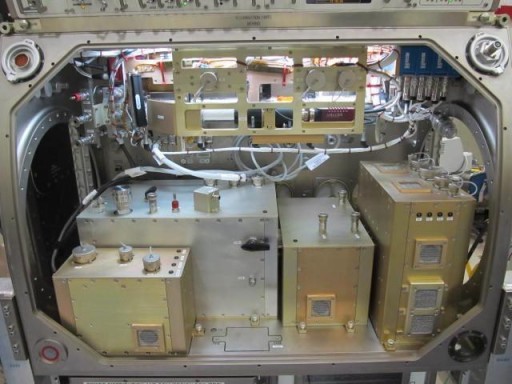
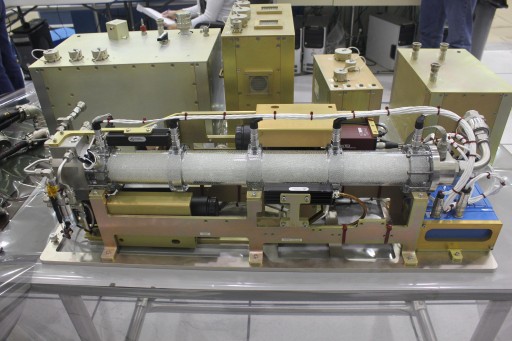
There are no design methodologies for two-phase flow in packed columns in microgravity meaning that two-phase flow equipment can not be optimally designed for in-space applications which means current hardware likely is of excess weight, consumes unnecessary energy and has a reduced efficiency and operational life time. Therefore, experimentation is needed to understand the two-phase dynamics occurring in different packings in the space environment to learn lessons for the design of future systems that need to be more efficient.
Current in-space systems where two-phase flows occur include life support systems, thermal control systems, fuel cells, in-situ resources, heat pipes, materials processing, production of pharmaceutical-grade water and the transport of nutrients within soils. Fixed Packed Bed Reactors are currently in use in a number of systems aboard the International Space Station including operational and science facilities. NASA is also designing similar systems for application on future spacecraft, but all without a complete knowledge of flow dynamics in microgravity.
The expected return from PBRE will be a set of tools and guidelines to be used by engineers to develop reliable reactors for microgravity as well as the reduced gravity environments of Moon and Mars. Initial testing on microgravity flights showed that the liquid hold-up within packed columns is significantly influenced by gravity, however, typical column systems require several minutes to fully develop which is well beyond the duration of a microgravity flight – requiring a test architecture to be established on the space-based platform for an empirical investigation of column flow dynamics in microgravity. The PBRE study will focus on transitions between flow regimes and associated pressure gradients in the different packing material types.
The PBRE experiment rig is mostly operated from the ground and includes the various fluid reservoirs, the column, pumping equipment and instrumentation. Delivered as part of the data stream from the instrument are the gas and liquid flow rates, test section temperature and pressure and an NTSC video feed to document the progress of the experiment. PBRE is operated within the Microgravity Science Glovebox
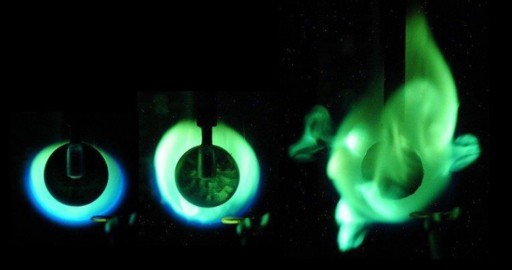
BASS-M stands for Burning and Suppression of Solids – Milliken and is part of a series of BASS experiments that investigate how solid materials burn without the presence of gravity which is of use in physics but also in spacecraft engineering and fire protection. The BASS-M experiment looks at flame-retardant cotton fabrics to determine how well they resist burning in microgravity. This can be used in the development of flame-retardant textiles for use on Earth and in space.
The BASS-M experiment will put the hypothesis that materials in microgravity burn as well (if not better) than in normal gravity to the test given identical environmental parameters (pressure, oxygen concentration, temperature).
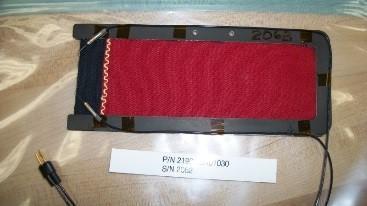
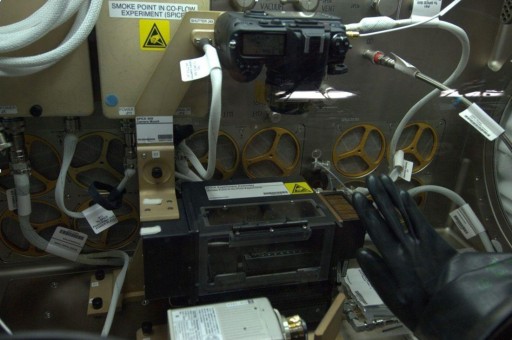
Also, different air flow rates will be employed to resemble forced convection in microgravity or free fall conditions on Earth. A total of ten differently treated textiles will be tested and each textile’s ability to self-extinguish will be compared against tests conducted on the ground. BASS uses an upward burning test which mimics the worst-case geometry for flammability on Earth which also allows for a comparison of upward burning on Earth and in space.
BASS-M delivers to ISS 44 textile samples already integrated with igniter wires – four samples of 11 different sample types, one being an untreated control. Each sample consists of a small portion of untreated textile that interfaces with the igniter to provide a start-point for the burning process so that the flames of the untreated sample directly impinge on the treated portion of the textile.
A high speed camera will capture the burning process and sensors will be used to keep track of the burning process, flame shape, flow speed, flame spread rate and flame dynamics such as oscillations and pulsations. The critical observations for the extinction are flame dynamics just prior to extinction for incorporation in models.
BASS-M uses BASS and SPICE (Smoke Point In Co-flow Experiment) hardware set up in the Microgravity Science Glovebox. Hosted within the assembly is a fan and an anemometer to measure the flow rate which can be adjusted between 5 and 50 centimeters per second. A radiometer quantitatively measures the flame output. Each test is expected to take around one minute from ignition to full extinction.
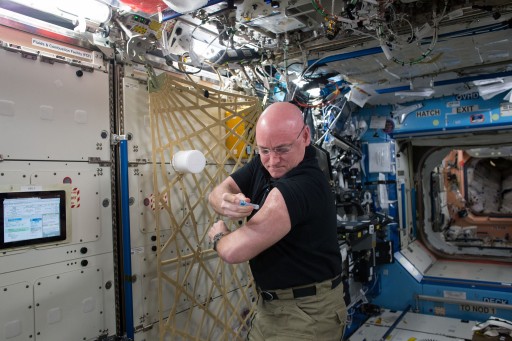
In addition to a number of new studies, Expedition 46 will continue numerous experiments that started during previous increments. ISS Science spans across all fields of science with particular focus on Earth and Space Science, Physical Science, Technology, Biology and Biotechnology, Human Research and Educational and Cultural Activities.
The crew will be supporting hundreds of scientific studies and experiments that are in progress aboard the Station – often acting as test subjects themselves performing different experiments to study the effects long duration space flight has on humans.
A human physiology study that will keep the crew busy many days of their mission is Ocular Health. Its full name is Prospective Observational Study of Ocular Health in ISS Crews. The Prospective Observational Study of Ocular Health in ISS Crews (Ocular Health) protocol aims to systematically gather physiological data to characterize the Risk of Microgravity-Induced Visual Impairment/Intracranial Pressure on crewmembers assigned to a 6 month ISS increment,” the NASA experiment overview said.
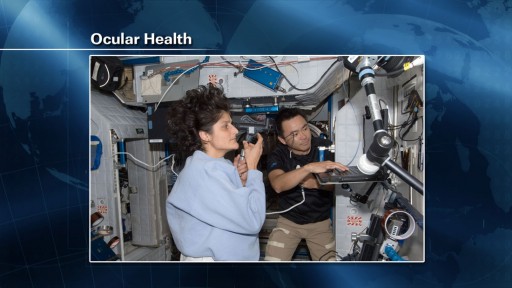
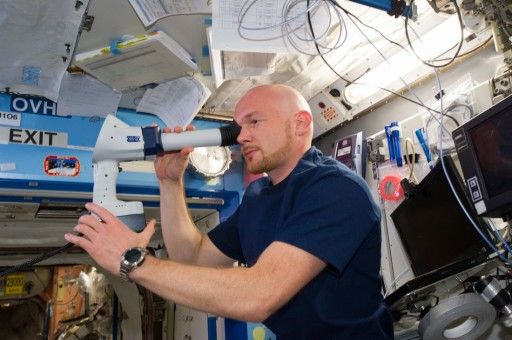
It is known that some (not all) astronauts in orbit experience changes in visual acuity (visual clarity) and intraocular pressure as a result of fluid shifts within the body as it is subjected to microgravity. About 20% is astronauts flying to ISS have reported these kinds of changes. Test subjects will undergo pre-flight, flight and post-flight testing of their eyes using a variety of techniques.
Near and far visual acuity will be tested for each eye independently using a Snellen chart and Amsler grid testing. Also, intraocular and blood pressure measurements are part of the study as well as ocular ultrasounds to identify changes in globe morphology, fundoscopy to detect retinal changes, threshold visual field testing to assess central and peripheral vision changes, contrast sensitivity changes as a measure of visual function, and vascular compliance calculations. In-flight measures will be taken on Flight Days 10, 30, 60, 90, and 120 as well as 30 days prior to return.
Pre- and post-flight examinations include refraction testing, pupil reflex testing, extraocular muscle balance and function checks, CT and MRI scans and split lamp biochemistry and high resolution retinal photography.
“The purpose of this study is to collect evidence to characterize the risk and define the visual changes and central nervous system (CNS) changes observed during a six month exposure to microgravity including postflight time course for recovery to baseline. This study will gather information that can be used to assess the risk of Microgravity-Induced Visual Impairment/Intracranial Pressure (VIIP) and guide future research needs,” the experiment overview notes.
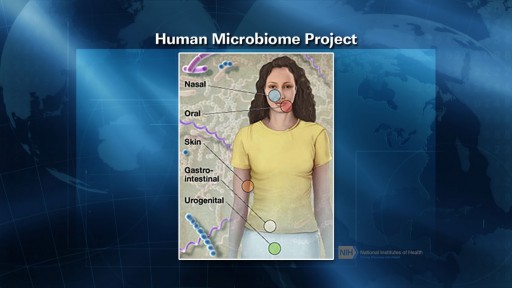
A study that began during Expedition 35/36 is called Microbiome with its full name: Study of the Impact of Long-Term Space Travel on the Astronauts’ Microbiome. The study will investigate the impact of long duration space flight on both, the human immune system and an individual’s microbiome. The microbiome is the totality of microbes that live in and on the human body at any given time and influence human physiology. Some consider the microbiome to be a “newly discovered organ” due to its importance for human physiology. In fact, there are about 10 times more microbial cells than human cells in and on the human body, but the microbiome only accounts for about 200 grams.
The study involves extensive sample collection from subjects. Crew members will undergo sampling before, during and after their flight to ISS. Samples include nasal and oral samples, skin swabs and optional gastrointestinal samples. These will be taken from a total of nine astronauts before flight, around flight day 7 and 90 and at return minus 14 days as well as post flight. In addition, ISS surface samples are taken to better understand the microbial environment the crew members are subjected to.
ISS surface swabs will be collected from the crewmember’s sleeping quarters, exercise equipment, handheld microphone, Cupola knob, and two air vents located within frequently used ISS modules using a swabbing device. In addition, drinking water is sampled. Also, the crew member’s take saliva and blood samples to determine cortisol levels as well as cytokines for stress level analysis. Finally, crew members complete Environmental Health and Hygiene surveys to obtain metadata including astronaut health and hygiene.
Data from the microbiome investigation will help determine the effect that long duration space flight has on the crew member’s microbiome which in turn affects general health, immune response and overall physiology of the individual. For future long duration missions beyond Earth orbit, knowledge about these physiological effects is required to keep the crew members in optimal condition.
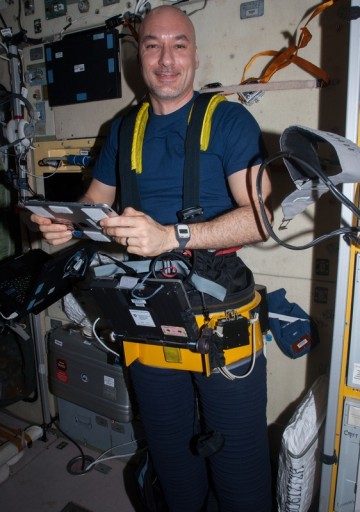
Fluid Shifts Before, During and After Prolonged Space Flight and Their Association with Intracranial Pressure and Visual Impairment. Known as the Fluids Shift study, this experiment is one of the most complex integrated experiments ever performed on ISS using pieces of US and Russian hardware to attempt to quantify the amount of fluid shifting from the lower body to the upper body when transitioning from a gravity to a microgravity environment.
This will also lead to an understanding of effects of the fluid shift on fluid pressure in the head, changes to vision and eye structure. Effects on the eye caused by elevated intracranial pressure include globe flattening, choroidal folds, and alteration of the optic nerve.
The fluid shifts study uses a number of measurements – fluid compartmentalization (determining total body water by using heavy water as tracer, determining extra and intracellular water content, plasma volume & interstitial volume), ultrasound measurements to track the thickness of tissues on the forehead, tibia, calcaneus, ultrasounds to measure vascular dimensions, MRI for the measurement of vascular dynamics, ocular measurements (optical coherence tomography, tonometry, ultrasounds for structural changes), cardiac variables using ultrasounds, and intracranial pressure measurements.
The study will utilize the Russian Chibis Lower Body Negative Pressure suit that shifts fluids back to the lower body to provide comparison measurements with those made in pure microgravity and on Earth.
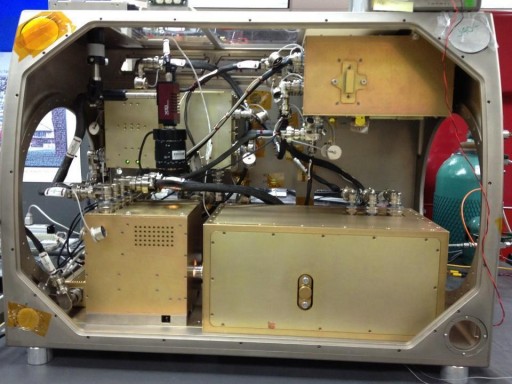
“Observation and Analysis of Smectic Islands in Space” will study the unique behavior of liquid crystals in microgravity with special focus on their overall motion and merging of crystal layers which is known as the formation of smectic islands. Liquid crystals are widely used in technology, being employed in LCD TV screens, laptop screens, watches and other electronics with flat panel displays. The also find use in soaps and membranes. Studying liquid crystals in microgravity will provide new insights into two dimensional system physics of complex fluids. Findings may lead to understanding of well aligned, very high speed electro-optic devices that could find use in embedded ferroelectric liquid crystal micro-displays.
The experiment assembly consists of a bubble chamber that is filled with medium, air jet injectors, ink injectors, LED lights and a camera assembly that monitors the activity inside the chamber. This setup will be used to study the various aspects of fluid crystal behavior in space – looking at overall fluid motion, diffusion, and the merging of crystal film layers.
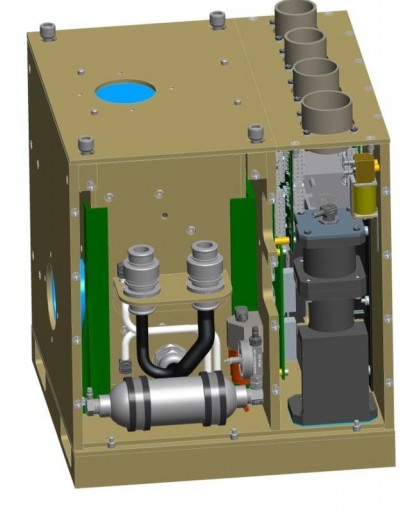
The experiment allows for a detailed study of complex fluid physics behavior in two dimensional fluids using freely suspended liquid crystals, focused on hydrodynamic flow, on relaxation of hydrodynamic perturbations, and on hydrodynamic interactions in two dimensions.
Precision studies of 2D hydrodynamics is possible in microgravity by using freely suspended bubbles without islands, convection, and sedimentation which represent nearly ideally homogenous (physical & chemical) systems. The introduction of islands / droplets in this system is recorded as controllable inclusions that modify flow and as markers of flow in the system. The experiment also looks at thermocapillarity of 2D fluids and collective systems of layer step interfaces on bubble surfaces.
The new Haptics-1 hardware includes a single degree of freedom high-resolution force control joystick to be used in physiology research in zero-G with a technical element as this setup can find application in future space-telerobotics technology. The experiment will study how remote-controlled robot operation from space (telerobotics) can be accomplished with special focus on providing a haptic feedback to the controller in the form of force on the control device. This requires detailed knowledge on the effects of microgravity on force perception and motor control capability which has not been studied before.
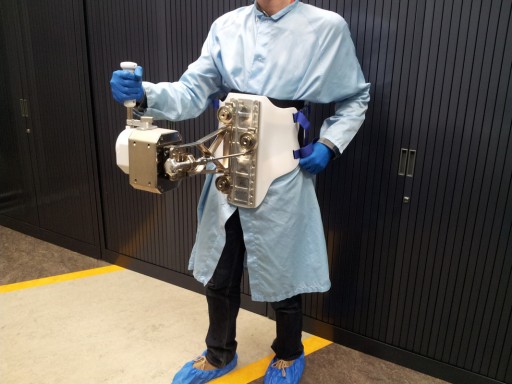
The experiment hardware consists of a joystick that uses a highly power-dense brushless direct-current actuator, an EtherCAT motor controller, custom-built force and torque sensors and flight computer using Commercial off-the-shelf components. The Haptics-1 joystick is mounted via standard space station interfaces to a body harness.
Haptic feedback is extremely important for future telerobotics performed from space as it provides the controller with guidance as to how much force needs to be applied to complete a given job. This is already used on Earth, but for application in space, the examination of haptic feedback perception in astronauts in zero-G is necessary.
As part of experiment sessions, the astronaut can push and pull the joystick to complete simulated tasks that involve haptic feedback provided by the system that can produce minute forces that will be hard for most people to notice up to considerable resistance.
A total of seven different experiments are planned with the payload, although more can be easily uploaded to the instrument computer. The instrument is controlled via a touchscreen that builds the primary interface to the crew member.
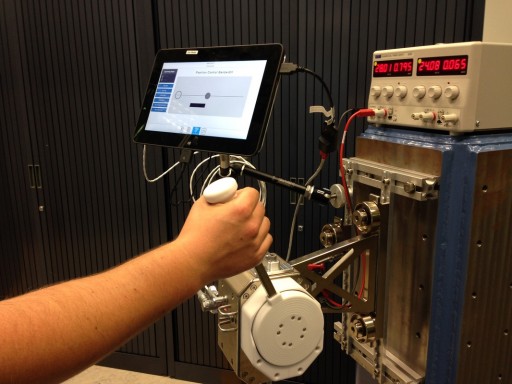
For the experiment, crew members will be playing the computer game Pong – moving a bar on the side of the screen as precisely as possible under different feedback settings. Each experiment is accompanied by questionnaires that evaluate the smallest feedback a crew member could feel and how realistic the different settings feel. The experiments will be conducted at different points in the crew member’s mission to determine the effect of the mission duration on human motor control in microgravity.
The Haptics-1 experiment explores uncharted territory as it will answer the question whether the human body will be more sensitive to forces in space and how force perception changes over time during exposure to zero-G.
Telerobotics are expected to come into play in the future when astronauts control robots performing spacewalks on the exterior of spacecraft or telerobotically control rovers on Mars or an asteroid from a spacecraft in orbit.
Expedition 46/47 will also see several experiment sessions using the two SPHERES satellites that are used as testbed inside the Station. SPHERES can be modified using different systems to perform a range of experiments, for example RINGS and Zero Robotics.
SPHERES stands for Synchronized Position Hold, Engage, Reorient, Experimental Satellites and involves two satellites that are used inside the space station to provide a miniature testbed to study maneuvering capabilities and spacecraft measurement systems.
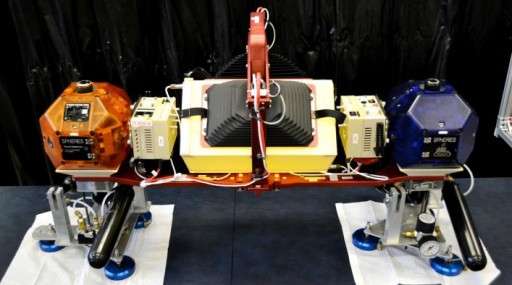
These two small satellites are used to study maneuvers in space in miniature inside the ISS.
The Slosh experiment investigates how liquids move around inside containers in microgravity. The physics of liquid motion in space are not well understood. A good understanding of the processes at work would improve modeling of the behavior of rocket fuel inside the tanks of satellites and other spacecraft or rockets. Computer models that exist have not been checked against actual experimental data acquired which is what this experiment will accomplish.
To conduct the experiment, the two SPHERES are attached to the assembled experiment hardware and the system is put through a series of maneuvers via the SPHERES satellites. Collected data will be downlinked for analysis.
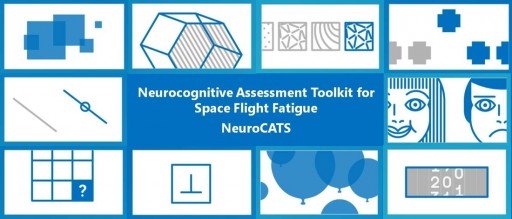
Cognition, also known as Individualized Real-Time Neurocognitive Assessment Toolkit for Space Flight Fatigue uses a battery of tests to measure how spaceflight-related physical changes (microgravity, lack of sleep quality, diet) can affect the cognitive performance of humans during long-duration space flights. The experiment consists of ten brief computer-based tests that cover a range of cognitive functions and deliver immediate feedback on current and past results. A good neurocognitive function for effective performance during space missions makes an investigation of sleep and fatigue in space an absolute necessity.
The testing operation consists of a sleep questionnaire and subjective evaluations at the beginning followed by the ten tests that focus on: sensor-motor ability, visual object learning and memory, attention and working memory, abstraction, spatial orientation, emotion recognition, abstract reasoning, complex scanning & visual tracking, risk decision making, and vigilant attention and psychomotor speed.
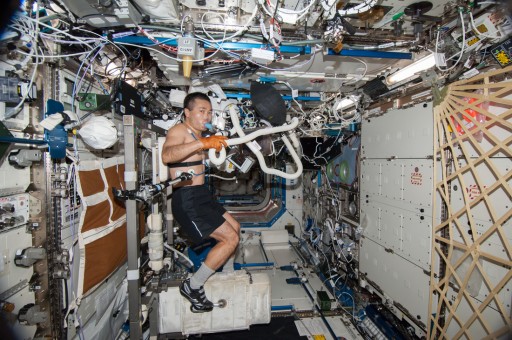
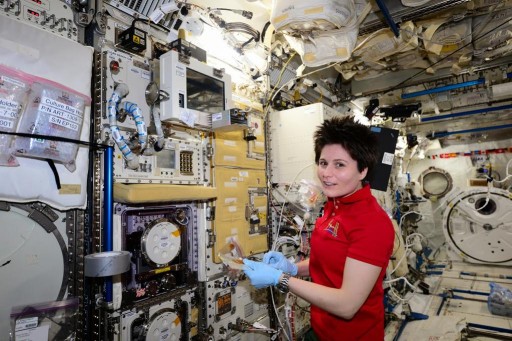
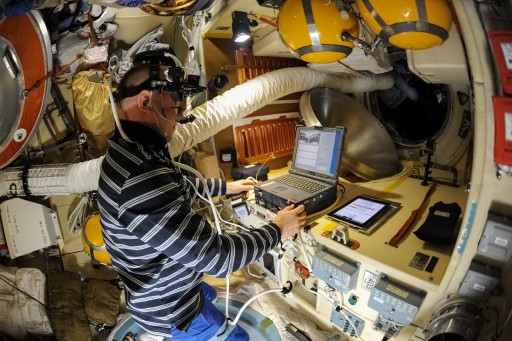
The European Space Agency will also continue operations of its Circadian Rhythms Study that will examine the role of synchronized circadian rhythms and possible maintenance during long-duration spaceflight and addresses the impacts to crew members’ health and wellbeing. Understanding how the dark/light cycle and sleep shifting affects circadian rhythms and with that the performance of the crew members will enable scientists to develop new sleep shifting techniques for crew members in space and shift workers on Earth.
The SPINAL study involves ultrasound scanning of the crew member’s spine over the course of their flight to assess the extent and impact of spinal elongation in crew members undergoing long duration space flight. Scans are performed 30, 90 and 150 days into a crew member’s mission. “Ultrasound images will focus on the cervical and lumbar areas of the spine and surrounding tissues. The test subjects will also undergo pre- and post-flight ultrasound and MRI scans on Earth to provide baseline data,” NASA said in a statement. The SPINAL study also seeks to advance medical imaging techniques for application on Earth.
Many other long term ISS Research projects will continue on Expedition 46/47 including many human research experiments focused on the effects of long duration flights on the human body. These tests include cardiovascular studies, studies of metabolism properties, etc. For that, the Astronauts will take regular tests (e.g. vision checks, electrocardiography) and give samples (Blood, Saliva, Urine) that will be returned to Earth for analysis.
On the Russian side, there are also a number of science operations that will be underway throughout Expedition 46. These experiments include material science, biology, human research, earth observation and physics&chemistry.
The new Biopolimer Experiment seeks to help in the development of new polymeric materials resistant to biocorrosion. The experiment uses a series of test specimens in sealed film packets also containing polymeric materials. After exposing the containers to microgravity for a specified amount of time, the hardware will return to Earth for analysis to determine the resistance of the different materials to biocorrosion in spaceflight conditions for future application in spacecraft construction.
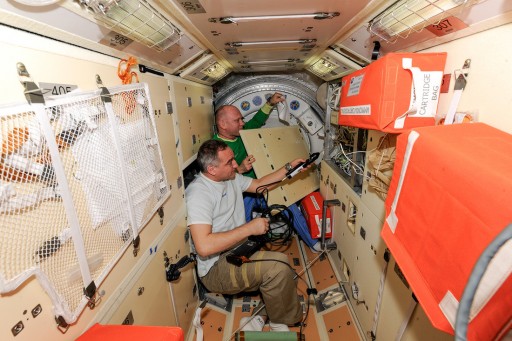
Matryoshka-R consists of a number of radiation dosimeters that are set up inside the space station to assess radiation exposure of the crew relative to ISS position in its orbit and shielding provided by the modules.
Obstanovka (=Environment) features external hardware including a set of magnetometers, wave sensors, potential probes, plasma discharge stimulators, an electron spectrograph and other components to study space weather. Obstanovka will study electromagnetic fields and plasma-wave processes occurring in the ISS Near Surface Zone to examine plasma component factors in near-Earth space. “The problems concerning the interaction of such super-large body as the International Space Station (ISS) with space plasma are of the top-priority importance for both technological and scientific experiments aboard the ISS,” the RSC Energia Experiment Overview document said.
Seismoprognoz will measure the temporal and spatial scales of ionospheric disturbances caused by seismic phenomena in order to develop algorithms to detect plasma features of earthquakes and anthropogenic impacts from space-based instruments. The payload consists of an external monoblock, a Data Control and Acquisition Module, an attachment kit, flash memory and associated cables and connectors.
‘Vzaimodeistviye’ (Interactions) looks at psychological aspects of long duration space flight during which different cultures come together aboard a Spacecraft such as ISS and seeks to improve crew interactions aboard ISS and with teams on the ground.
Relaxation is an Earth Observation Experiment that uses the Photospectral Hardware to acquire spectral and photographic imagery of Earth’s surface and atmosphere under ground commanding.
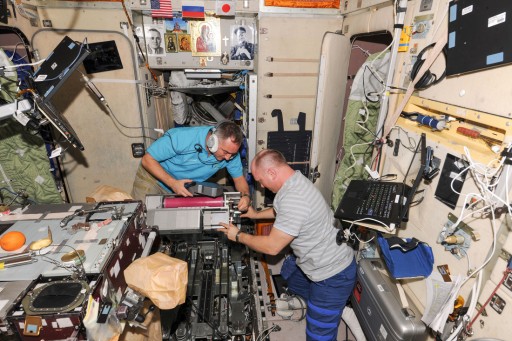
The PZEh-MO-8 Body Mass Study tracks a crew member’s body mass during their stay in microgravity which allows to examine the effects of diet and exercise in space. Measuring body mass in Zero-G, where matter is weightless, but not massless, is accomplished by measuring the inertial forces that arise during the oscillatory motion of a mass driven by two helical metering springs with known spring constants.
By logging the period of each oscillation of the crew member and comparing it to the period of a known mass, the unknown mass can be calculated.
Zero-G deconditioning is also being tracked by the MO-7 study that measures a crew member’s Calf Volume. These measurements are done with the IZOG device which is a custom-sewn fabric cuff that fits over the calf. The knee and lower foot of the left leg are used as reference points. The measurements provide a rough index of deconditioning in Zero-G and can be used to assess countermeasures.
The Russian MedOps Suite of investigations assesses crew health and other physiological changes occurring during long duration space missions by collecting samples of blood, saliva and urine of participants.
